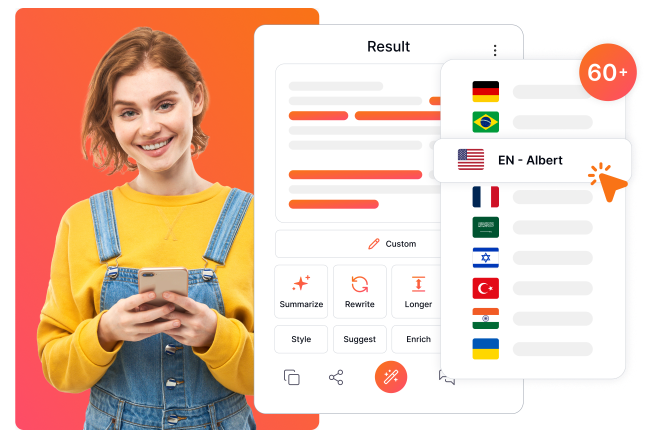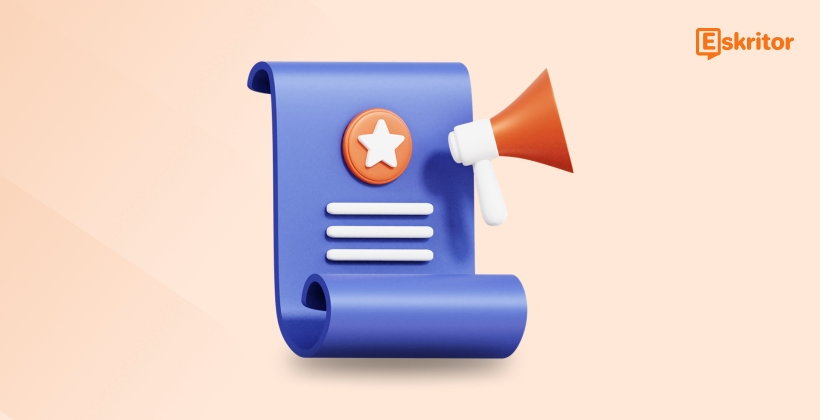Top AI Writing Tools to Boost Productivity
Top AI Writing Tools to Boost Productivity
Blog Article
Why AI Editing is Revolutionizing Proofreading
Synthetic intelligence (AI) writing engineering has evolved rapidly within the last decade, reshaping just how we produce and communicate with written content. From syntax correction methods to AI-generated novels, the possibilities look limitless. But wherever precisely is this engineering heading? Let's investigate the inventions, challenges, and possible potential of AI writer.

How AI Publishing Engineering Operates Nowadays
At their core, AI writing engineering relies on Natural Language Handling (NLP) and unit learning. These systems enable versions to know, produce, and improve individual language. Instruments available nowadays do well at responsibilities like:
1. Material Generation
AI has achieved a spot where it could generate total website articles, social networking sayings, and even media articles. Some types are capable of mimicking human writing types so successfully that unique between AI- and human-written content is now significantly difficult.
2. Grammar and Style Suggestion
AI-powered publishing assistants don't only check for syntax and punctuation mistakes; they also give recommendations to enhance tone, understanding, and syntax, creating complex writing accessible to an extensive audience.
3. Belief Analysis
AI may consider the mental tone of a piece, permitting corporations to examine how their communications may resonate with readers. That is especially of use in advertising and customer interaction.
The Current Traits in AI Publishing Engineering
Several traits are shaping another phase of AI-powered writing resources:
• Personalization
AI writing technology is increasingly capable of tailoring material to individual preferences. Designs may conform to a user's publishing style, ensuring the result thinks authentic.
• Multilingual Functions
Many AI tools are growing their global achieve by offering improved interpretation characteristics and support for numerous languages.
• Increased Research Characteristics
AI tools now get the capability to analyze great amounts of data and provide fact-checked, well-researched writing in seconds, simplifying the procedure for experts in industries like legislation, financing, and journalism.
What the Future Keeps for AI Writing Engineering
1. Increased Imagination
While recent AI is adept at generating content, their creativity is still restricted to patterns within their instruction data. Future AI is not only expected to help but to produce unique, insightful works that problem individual imagination.
2. Seamless Relationship
Envision an AI that works along side you in real-time, performing your sentences, conducting live edits, and actually brainstorming ideas. AI publishing instruments might soon become co-authors, permitting creativity to flow uninterrupted.
3. Ethical and Accessible Design
With growing matter about plagiarism, misinformation, and prejudice, designers are working toward more clear AI instruction processes and moral implementation. Future instruments will probably present more extensive citations and steps to make sure accountability.
Difficulties and Concerns
The development of AI writing technology is not without hurdles, including:
• Ethical Issues

Who possesses material developed by AI? How do we guarantee AI-generated material isn't distributing misinformation? These debates stay unresolved.
• Human-AI Harmony
Will AI match individual creativity or completely replace certain roles? Many writers and musicians bother about their relevance within an AI-driven world.
• Accessibility Separate
Not all businesses or regions have identical access to cutting-edge AI tools, raising issues concerning the affect of this engineering on world wide inequality.
Changing the Way We Create
AI publishing engineering remains in their infancy compared to its potential. Whether you're students making documents, a content marketer targeting unique readers, or even a novelist seeking inspiration, AI instruments can continue steadily to revolutionize the writing process. The following decade promises breakthroughs that combination individual ingenuity with equipment intelligence, creating a future wherever publishing is better, available, and impactful than actually before.
Report this page